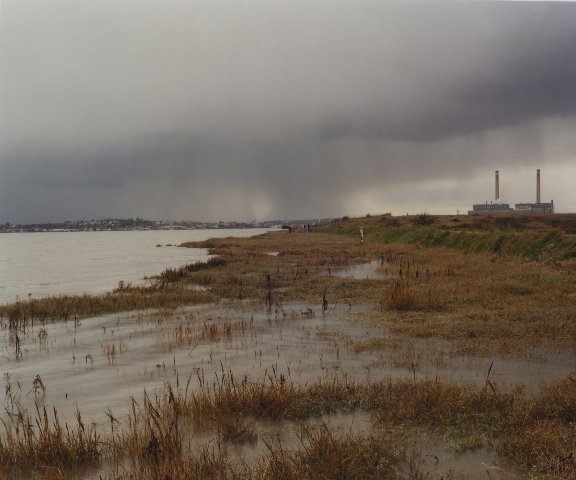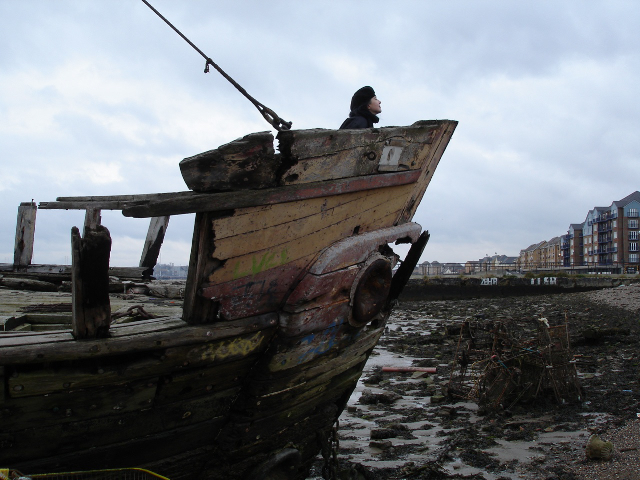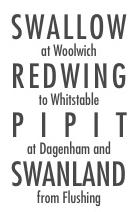A Place For Words: Soundings from the Estuary
What happened?
Soundings from the Estuary was a project about the Thames Estuary, exhibited in 2008 as part of the London Festival of Architecture. Composed of individual works and collaborations by writer Germander Speedwell, photographer Frank Watson, and sound artist Dave Lawrence, the project was organised by the artists themselves, motivated by their interest in the area and the current threats from overdevelopment as well as rising water levels. Partial funding for this project was obtained as academic research grants from some of the artists' employers.
Germander Speedwell used sources as diverse as maps, shipping reports, bird hide record books, graffiti and word-of-mouth to write pieces about place names, avian activity and shipping in the Thames Estuary. A variety of people who live or work in the area were approached for information, from farmers to birdwatchers, parish councillors to passers-by.
The images and video works by Frank Watson depict buildings and structures within the landscape, and Dave Lawrence's sound works used recordings made on site as a basis for sound compositions. While the photographs depict often isolated and empty landscapes, the word pieces, in contrast, show how many layers and levels of history, incident and activity actually exist in these places, and that the Thames Estuary is not a blank canvas for developers to blindly build over, but full of existing detail and knowledge which could inspire more imaginative and relevant development.
Project Gallery

Photograph by Frank Watson

Germander Speedwell on location

Detail from Landings: shipping movements in the Thames Estuary
What made it work?
- Thorough exploration and research of the area allowed the artists to find lesser-known material, and helped give the work a solid basis and convey a truer picture of the area.
- Use of local knowledge - local names are frequently more relevant and truthful than official ones, and the nicknames found and the reasons behind them added more fun and interest to the work, and also acknowledged how the Thames Estuary is actually known and used by people.
- Use of factual words and names - most visitors to the exhibition recognised place names or features that they had some connection to or experience of, and this made them respond to the work.


